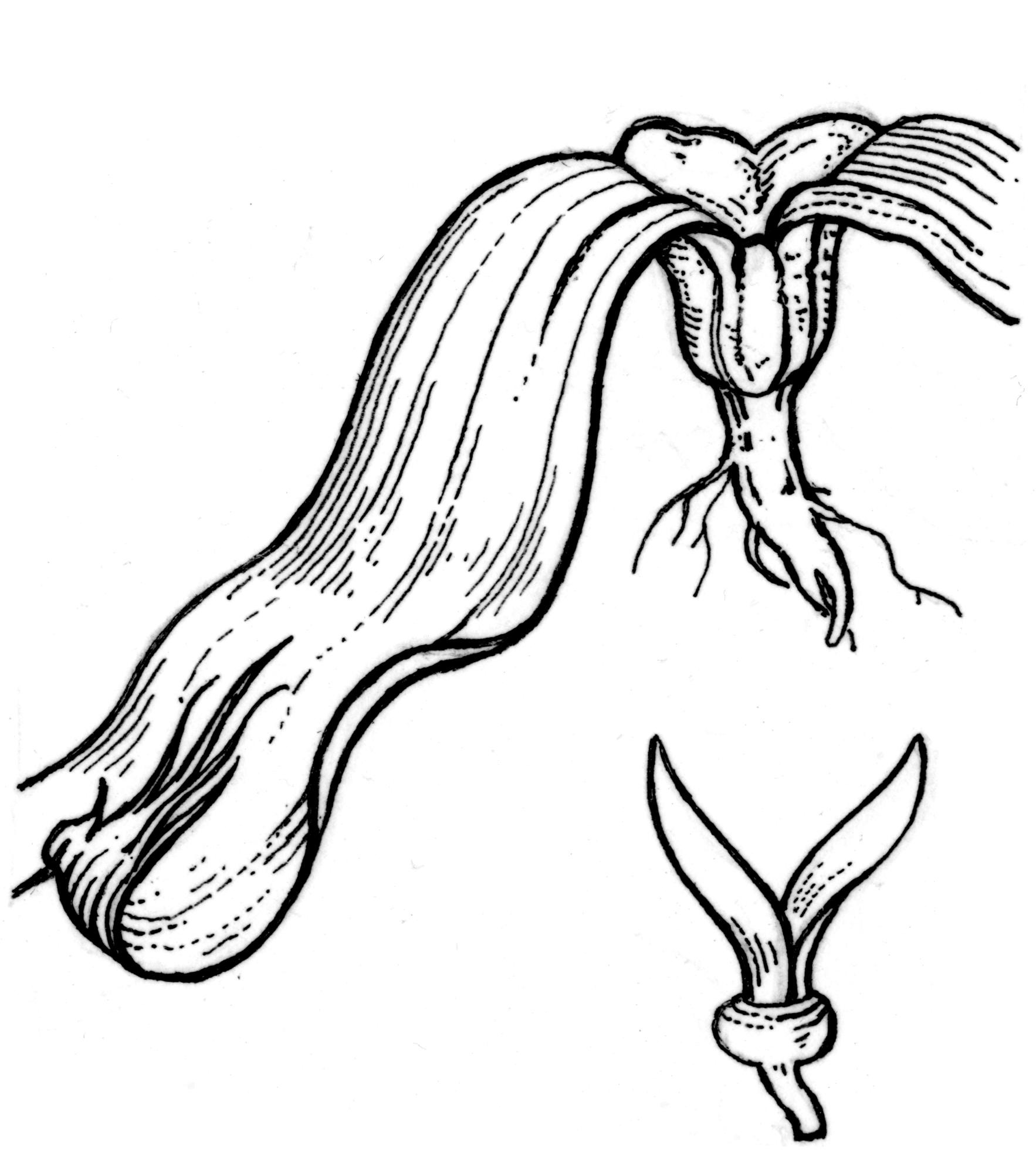
Commemorating Austrian botanist and doctor Friedrich Welwitsch who, in 1859, first described this plant from Angola.
Bizarre plant with a partially buried woody stem looking like an inverted elephant foot and up to 1.5 m wide in the wild and a deep tap root. It may be described as a dwarf tree since the flattened stem is a result of the early death of the apical bud and subsequent growth around the rim of the central depression. Leaves two, large, strap-like, growing from 2 grooves at the base of 'foot'. They are the only leaves that the plant produces and may continue to grow outwards from the base for over 100 years; the tips becoming frayed and worn by the rigours of the desert. Old leaves may be up to 3 m long. Plants unisexual the organs cone-like but males with stamens and in the female cones the ovules are still naked though protected by two enveloping scale-like structures. A style-like structure is also present. Seed winged.
A monospecific genus that grows in the Namib desert of South West Africa.
van Jaarsveld, E. & Pond, U. 2013. Welwitschia mirabilis: Uncrowned Monarch of the Namib. Verleger: Cape Town.
Source: (1995). Welwitschiaceae. In: . Horticultural Flora of South-eastern Australia. Volume 1, Ferns, conifers & their allies. The identification of garden and cultivated plants. University of New South Wales Press.
